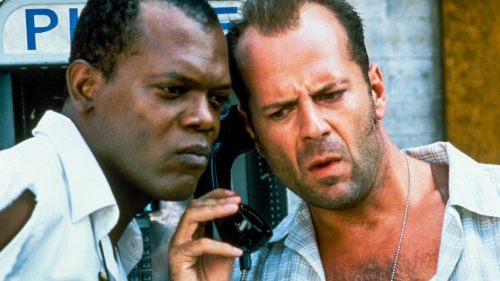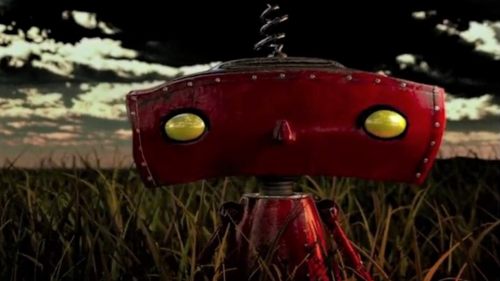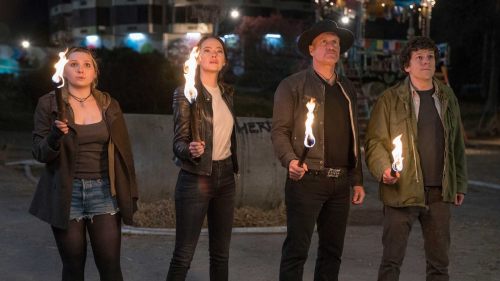Extra, Extra: KONG: SKULL ISLAND
Warner Bros. Home Entertainment provided me with a free copy of the Blu-ray I reviewed in this Blog Post. The opinions I share are my own.
As sales of physical discs (Blu-ray and DVD) decline, the idea of bonus features becomes less and less essential for new, mainstream films. There will always be a market for library titles with extensive retrospective commentaries and documentaries (see: Criterion, Scream Factory, etc), but for new films it's a dying trend. "Extra, Extra" is an attempt to encourage the studios not to give up on us disc champions, by mostly skipping over the film itself (which you can find reviews for anywhere) and focusing on the bonus features they were kind enough to include. Viva la physical media!
Like most sane people, I don't think a movie needs to be rebooted/remade until the last one is at least a generation old, but as Peter Jackson's 2005 King Kong is a tedious waste of time and talent, I had no objection to WB opting to introduce a new "8th Wonder of the World" less than twelve years later. Kong: Skull Island isn't another traditional remake like Jackson's or the 1976 version with Jessica Lange, but - as the title implies - an adventure set almost entirely in Kong's native land, with nary a trip to New York or an Ann Darrow in sight. It still takes a reel or so to get to the island, but Kong makes his presence known before their choppers even land, and from then on it's a fairly non-stop adventure that is just as good as a showcase for modern CGI trickery as the original was for stop-motion and matte work.
But you don't need another rundown of the film - we've already covered it extensively in our magazine and also two reviews here on the site. The short version is that it's not without some flaws (too many characters, a few weird skips in the narrative*, and its top-billed actor has no real function in the narrative) but it's still a highly enjoyable adventure with some surprisingly dark humor and influences (a $200m PG-13 movie with a Cannibal Holocaust homage isn't something we see every day). And it's step in the right direction for WB/Legendary's planned "Monsterverse", which will find this incarnation of Kong facing off against Godzilla (from their 2014 remake) in a couple years, which should if nothing else have less urine drinking than in Batman vs Superman. Whether the spectacle plays as well at home will likely depend on your home theater setup, but WB has made the Blu-ray a fairly enticing package for fans, with a nice smattering of extras that offer some insight into how much work it took to put the film together.
If you recall, Jackson's Kong seemingly had every second of its production offered as a bonus feature somewhere (there was even a separate release just of making of material), but this is a more traditional approach - you get a commentary track, a few deleted scenes, and a handful of brief but informative featurettes that, all in, will take you just under an hour to to watch (plus another two hours for the commentary), with thankfully very little repeated information. To briefly return to the film, the video and audio quality is reference-worthy as you might expect for this kind of tentpole release from a major studio, though I really wish WB would improve their menus as they're not only pretty ugly but also clunky to navigate, and almost never offer a "play all" function for their bonus features which means you'll spend too much time hearing that hideous "CWSSH!" sound as you scroll around the various options.
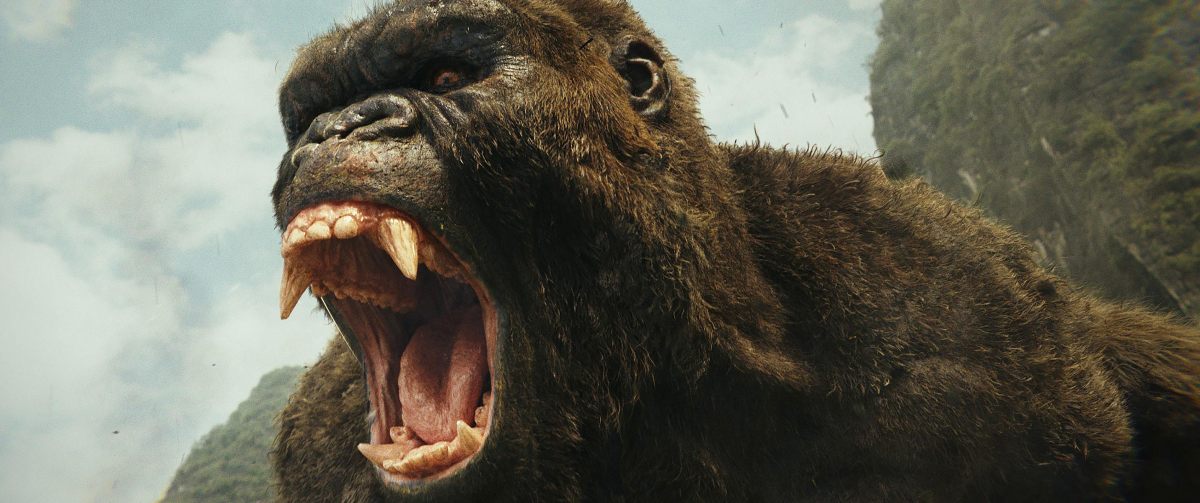
The meatiest feature is, obviously, Jordan Vogt-Roberts' commentary track, which is conducted completely solo - he doesn't have one of his cast members or the DP or whoever along for the ride as some filmmakers often do. It's a slightly missed opportunity given the film's lengthy development (there are four credited writers, none of whom are Vogt-Roberts) as it might have been interesting to hear one of the writers and/or a producer talk about the gestation more, but thankfully the filmmaker doesn't drone on about lighting or "We shot this angle in Australia but the reverse in Vietnam!" kind of stuff all that much. Instead he actually spends a surprising amount of time pointing out the film's many homages and references to both other Kong films (John Goodman's outfit is a replica of Robert Armstrong's in the 1933 original) but also various video games, anime, and just plain random movies (Taxi Driver?) that he opted to throw a little nod toward for anyone who might have spotted it on their own. He doesn't spend a lot of time explaining WHY he included such unusual visual references, such as a room designed to look like one from Metal Gear Solid, but his glee about being able to do so is kind of infectious. Also, unlike some directors who provide commentaries even though they seem to hate doing so (Rob Zombie comes to mind), he is clearly happy to keep talking, and doesn't bail as soon as the credits start like many of his peers - in fact it seems like he could have kept going once the final credit scrolls off screen and the track ends. It's a little dry and mostly frivolous, but it's an enjoyable track all the same as long as you aren't expecting any deep production history.
The featurettes don't really indulge in that sort of thing, either. "Realizing An Icon" and "Summoning A God" make up a larger whole referred to as "Creating A King", though I saw very little reason for them to be split apart from the others in this fashion, other than that they both focus on Kong. "Icon" touches a bit on the history of the character and how they wanted to approach reinventing him for their film while staying true to the spirit of the original, with Vogt-Roberts explaining that this was the first time that they didn't want to focus on the traditional "Beauty and the Beast story" as he refers to it. They also explain why they wanted to set it during the 1970s (a mix of the appropriate climate re: Vietnam and also because it just looks great), and a section where most of the actors talk about Kong as if he was any other human character in the film, before they start talking about their own characters. Overall, it's worth a look, but also a fairly unfocused piece that almost seemed like they intended it to be the start of a longer all-purpose making of before deciding to split everything up.
"God" goes into the untold millions of hours and megabytes that were necessary to bring the big guy to such glorious life, with the artists showing how they gave him a full muscular system under the fur to ensure his moves were natural, and how they had to develop new ways of dealing with Kong being injured throughout the film in order to maintain continuity. Surprisingly, the piece doesn't showcase actor Toby Kebbel doing some of the motion-capture, which would have been interesting to see since he also plays a (rather unnecessary) character in the movie as well. I've always been mildly fascinated by these things ("Kong has 19 million hairs!") because when they're as well done as this I often do forget that it's an entirely computerized creation that the actors never actually interacted with, so showing the man behind the curtain is, in its unusual way, a nice reminder that a movie can still suck me in and have me believing again.
"Tom Hiddleston: The Intrepid Traveler" is a pretty fluffy look at the actor (as well as Brie Larson) exploring the film's three major shooting locations: Hawaii, Vietnam, and Australia. As I mentioned, their characters are just kind of along for the ride and don't get anything as meaty as their co-stars (particularly Sam L. Jackson and John C. Reilly), but it's nice to see that they had a good time making the movie all the same, and I doubt either of them feel too bad about the script short-changing them when they got paid to explore such lovely locations. "Monarch Files 2.0" is a fun piece that was probably made for the website or some other marketing, showcasing a few of the film's non-Kong creations and narrated by the two characters Corey Hawkins and Tian Jing played, so in the latter's case she gets more to do here than in the movie. It's worth noting (spoiler!) that all four of these actors are the ones who appear in the post-credits setup for the next film, so hopefully they'll all get more to do in that one.
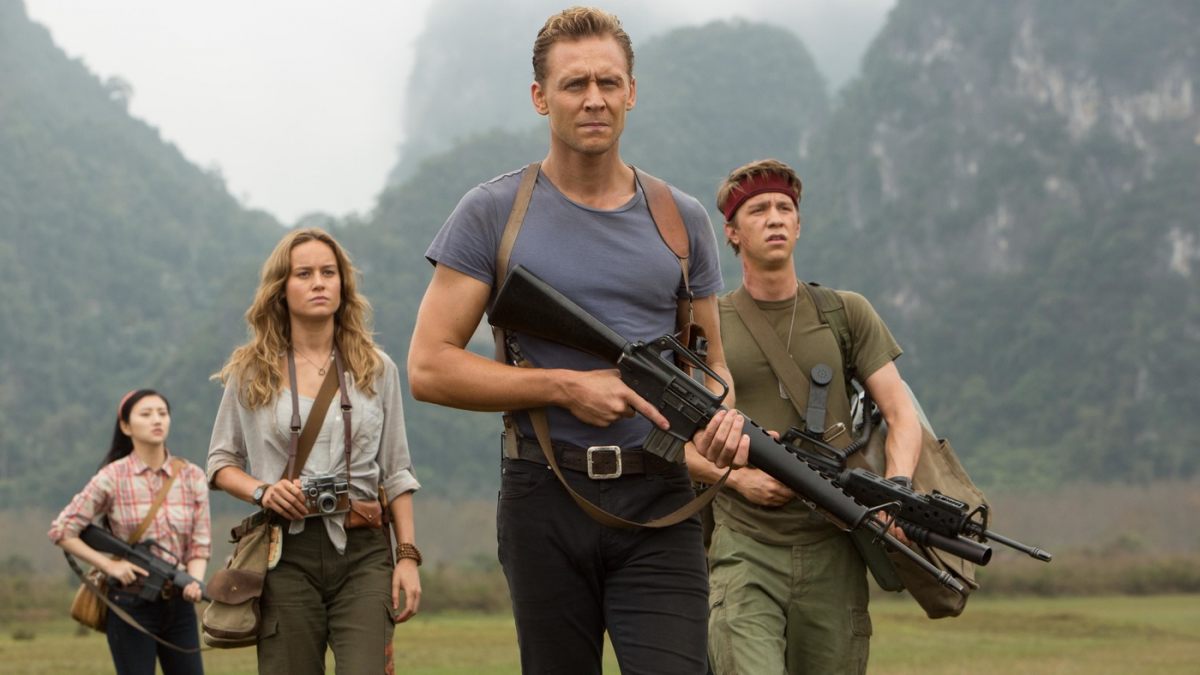
"Through the Lens: Brie Larson’s Photography" is a brief look at Larson's character's camera, which was functional and, at Vogt-Roberts' insistence, always loaded with film so she could really take all the photos we see her take. It's only narrated by the director, however - it seems like a missed opportunity that she didn't get to contribute, but at least we see all the photos - she's got a pretty good eye, and some of them probably could have easily been used as publicity stills. "On Location: Vietnam" is basically a Vietnam-centric extension of Hiddleston's piece, but at least here we get to see a few other actors gush over how damn gorgeous it is, with Hiddleston even preferring it to Hawaii and Australia. Unlike most previous films, they didn't just shoot a few exteriors there with a B-unit - the whole cast and crew went for major parts of the production, which makes me wish it got more than five minutes.
Finally there are four deleted scenes, none of which include any padding to help place where they would go in the movie, though it's not hard to figure out. The first two are the only ones the film could have used; in the first we see Sam Jackson address his men, which sets up their bond more than the finished film does, and in the second, he has a proper meeting with Hiddleston's character that sets up their dueling alpha-dog antagonism. The other two are just more walking in the jungle stuff of little use, but it's interesting than all four of them feature Jackson - even in the finished film I fail to see why he wasn't giving top billing over Hiddleston, given that he's a proven box office draw AND a more important character in the film (and their screentime seems about the same anyway), so if these were included it'd be an even bigger mystery.
All in, it's a solid disc that offers plenty of bonus material for its fans, though they shouldn't expect any of it to dig deep into the film's genesis or production. None of the writers are interviewed, and nothing about the film's post-production is depicted - Vogt-Roberts doesn't even narrate the deleted scenes to explain why they were excised, which is a fairly common practice when the filmmaker is on board for a commentary anyway. I wouldn't have minded a bit more of that sort of thing, but given WB's penchant for double-dipping their discs it wouldn't shock me to see a meatier special edition down the road, perhaps collected with Godzilla in order to promote the crossover film. But at least they didn't short-change us with its "initial" release, providing a terrific transfer on a disc that will take you five hours to watch in its entirety, more if you, like me, rewound the helicopter attack scene to enjoy the surround sound a second time.
*There's a closeup of a lugnut falling into the boat's gears, as if to foreshadow a malfunction - but that never happens?

